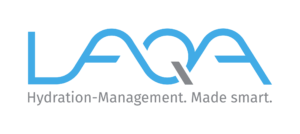Hydration management
for the care

Initial situation
There are currently around 15,380 nursing homes and 14,688 outpatient care services in Germany. A recent study shows that around 500,000 additional caregivers will be needed to care for nursing recipients by 2030. 67% of caregivers surveyed in this study said there was too little time for nursing home residents.
Challenge
Currently, there is hardly any concrete overview of the drinking behavior of persons under care in the nursing sector. With the automation of documentation and the individual subtle animation to drink more often, caregivers are significantly relieved and the health of the cared for is naturally improved.
Solution
Since LAQA’s total solution creates particular added value in the care environment, we have developed our hydration management solution primarily for this customer group.
Hydration management for care
Currently, more than 4.5 million people are receiving outpatient or inpatient care, and the trend is clearly upward. Because by 2030, around six million people in Germany will be in need of care. This represents an increase of more than 30 percent.
This development poses major challenges for care facilities. In inpatient care, there are extensive documentation requirements that usually include a drinking log. Nurses spend around 30 percent of their working time on these activities. Germany currently has a shortage of 180,000 nurses, and this deficit will rise to 500,000 nurses in 2030.
Our concept enables considerable relief for nursing staff, especially in inpatient care. For example, users can be grouped into living areas and evaluated or the data for the drinking log can be made available centrally. Once appropriate interfaces have been developed, the data can also be imported directly into the service providers’ management software.
